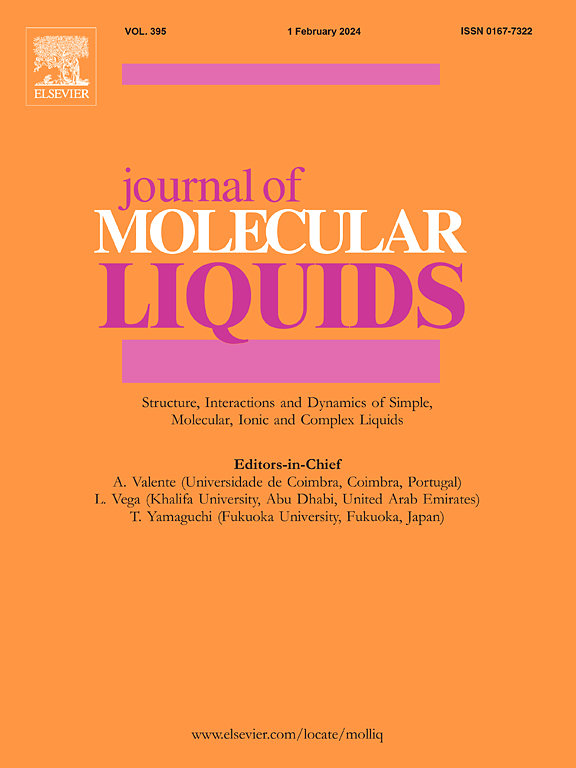Molecular insights into the motion of oil droplets in aqueous solutions of ester- and amide-containing cationic surfactants
IF 5.3
2区 化学
Q2 CHEMISTRY, PHYSICAL
引用次数: 0
Abstract
The study of self-propelled motion in soft matter systems has garnered significant interest owing to its potential applications in microfluidics, soft robotics, and autonomous system design. Understanding the molecular mechanisms underlying motility is crucial for advancing these applications. This study investigates the self-propelled motion of lauronitrile oil droplets in aqueous surfactant solutions, focusing on the impact of different surfactant molecular structures on droplet dynamics. This study compares surfactants with ester and amide linkages, highlighting their critical role in modulating interfacial tension and driving Marangoni convection, a key factor behind droplet movement. Surfactants with ester linkages exhibit a high affinity for lauronitrile and rapidly adsorb at the oil–water interface, generating strong Marangoni flows and driving fast droplet motion. In contrast, amide-containing surfactants exhibit slower adsorption and weaker interactions with lauronitrile, leading to reduced or absent motion. These findings provide new insights into the molecular mechanisms underlying the self-propelled droplet behavior in non-equilibrium systems and contribute to a deeper understanding of self-organizing phenomena.

求助全文
约1分钟内获得全文
求助全文
来源期刊

Journal of Molecular Liquids
化学-物理:原子、分子和化学物理
CiteScore
10.30
自引率
16.70%
发文量
2597
审稿时长
78 days
期刊介绍:
The journal includes papers in the following areas:
– Simple organic liquids and mixtures
– Ionic liquids
– Surfactant solutions (including micelles and vesicles) and liquid interfaces
– Colloidal solutions and nanoparticles
– Thermotropic and lyotropic liquid crystals
– Ferrofluids
– Water, aqueous solutions and other hydrogen-bonded liquids
– Lubricants, polymer solutions and melts
– Molten metals and salts
– Phase transitions and critical phenomena in liquids and confined fluids
– Self assembly in complex liquids.– Biomolecules in solution
The emphasis is on the molecular (or microscopic) understanding of particular liquids or liquid systems, especially concerning structure, dynamics and intermolecular forces. The experimental techniques used may include:
– Conventional spectroscopy (mid-IR and far-IR, Raman, NMR, etc.)
– Non-linear optics and time resolved spectroscopy (psec, fsec, asec, ISRS, etc.)
– Light scattering (Rayleigh, Brillouin, PCS, etc.)
– Dielectric relaxation
– X-ray and neutron scattering and diffraction.
Experimental studies, computer simulations (MD or MC) and analytical theory will be considered for publication; papers just reporting experimental results that do not contribute to the understanding of the fundamentals of molecular and ionic liquids will not be accepted. Only papers of a non-routine nature and advancing the field will be considered for publication.
 求助内容:
求助内容: 应助结果提醒方式:
应助结果提醒方式:


